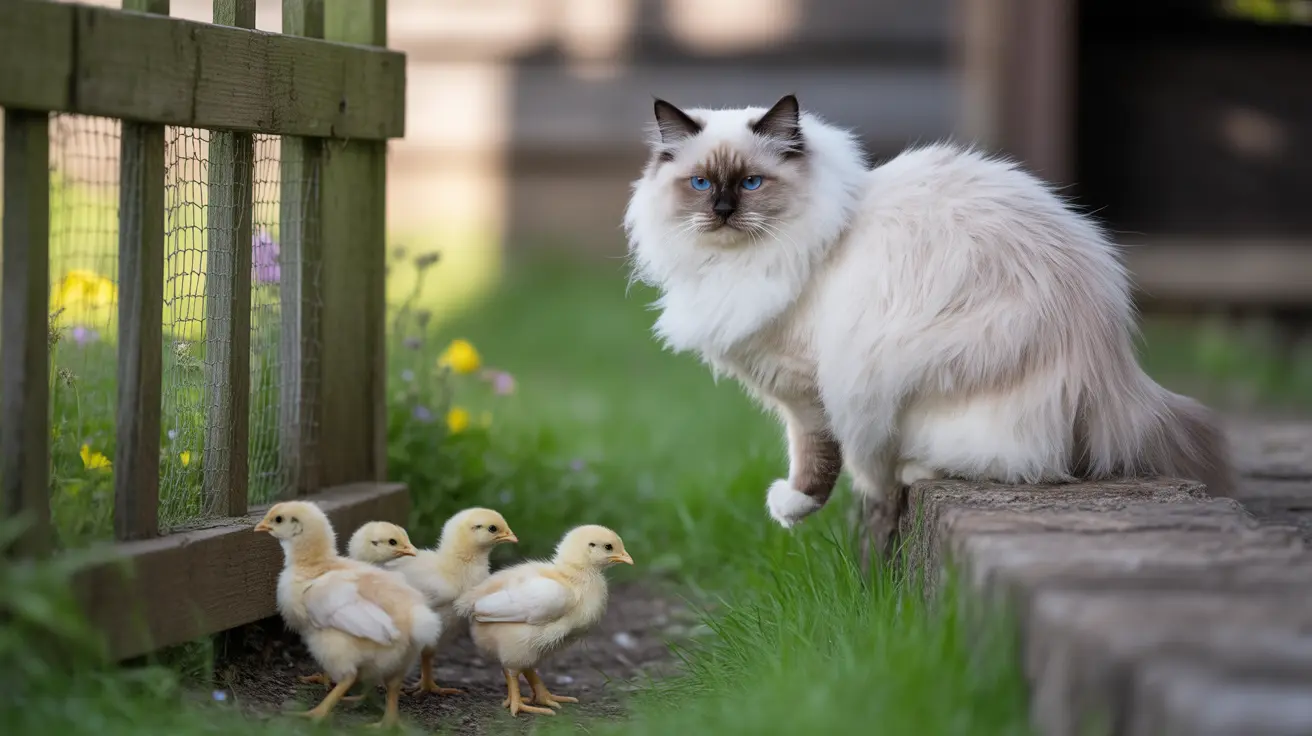Understanding the Risk: When Cats Target Chickens
The threat level cats pose to chickens varies significantly based on several key factors. Feral and unsocialized barn cats typically present the highest risk, especially when they're hungry or have previously succeeded in hunting poultry. Domestic cats, while still potentially dangerous, are generally less likely to attack chickens due to regular feeding and socialization.
Most documented cases of cats attacking chickens involve:
- Young chicks and pullets
- Bantam or smaller chicken breeds
- Weak or injured birds
- Isolated chickens separated from the flock
Size Matters: Which Chickens Are Most Vulnerable
The age and size of chickens play a crucial role in their vulnerability to cat attacks. Chicks and young pullets under four months old are at the highest risk due to their small size and limited defensive capabilities. Adult chickens, particularly larger breeds, are rarely targeted by cats as they can often match or exceed the cat's size.
The Critical Early Weeks
The first 8-12 weeks of a chick's life represent the period of greatest vulnerability. During this time, strict protective measures are essential:
- Secure, enclosed brooder systems
- Constant supervision during outdoor time
- Protected run areas with appropriate covering
- Regular monitoring for signs of predator activity
Effective Protection Strategies
Implementing proper security measures is essential for protecting your chicken flock from cats and other predators. Here are proven methods to keep your birds safe:
Physical Barriers
- Install secure fencing at least 6 feet tall
- Use hardware cloth with small mesh sizes
- Ensure all coops have solid walls and proper latching systems
- Create covered runs for additional protection
Environmental Deterrents
- Install motion-activated sprinklers
- Use natural cat deterrents like citrus peels
- Maintain clear sightlines around coops
- Remove potential hiding spots near chicken areas
The Benefits of Proper Integration
Despite potential risks, many farms successfully maintain both cats and chickens. Barn cats can actually benefit a homestead by controlling rodent populations that might otherwise attract more dangerous predators. The key lies in proper management and gradual introduction of animals.
Success stories often share common elements:
- Well-fed cats with regular feeding schedules
- Supervised introduction periods
- Clear boundaries between species
- Maintained separate territories
Frequently Asked Questions
Can cats kill adult chickens or are they only a threat to chicks and small breeds?
While cats can potentially harm adult chickens, they rarely attack full-grown birds, especially larger breeds. The primary threat is to chicks, pullets, and smaller chicken breeds like bantams.
How can I protect my chicks and pullets from feral or barn cats?
Protect young birds by using secure, enclosed brooders, implementing proper fencing with hardware cloth, maintaining supervised outdoor time, and using deterrents like motion-activated sprinklers around chicken areas.
Are barn cats more likely to attack chickens than domestic house cats?
Yes, barn cats, especially feral or unsocialized ones, are more likely to attack chickens compared to well-fed domestic cats. This is primarily due to their stronger hunting instincts and potential food scarcity.
What are the best ways to keep cats away from my chicken coop and outdoor runs?
The most effective methods include installing tall fencing with smooth surfaces, using hardware cloth for coverage, implementing motion-activated deterrents, and maintaining clean areas free of food scraps that might attract cats.
Can cats and chickens coexist peacefully on a farm or homestead?
Yes, cats and chickens can coexist peacefully with proper management, including adequate protection for vulnerable birds, gradual introduction periods, and ensuring cats are well-fed and properly socialized.
Conclusion
While cats can pose a threat to chickens, particularly young or small birds, proper management and protection strategies can ensure both species thrive on your homestead. Focus on protecting vulnerable birds, implementing secure housing, and maintaining appropriate boundaries to create a safe environment for all your animals.






